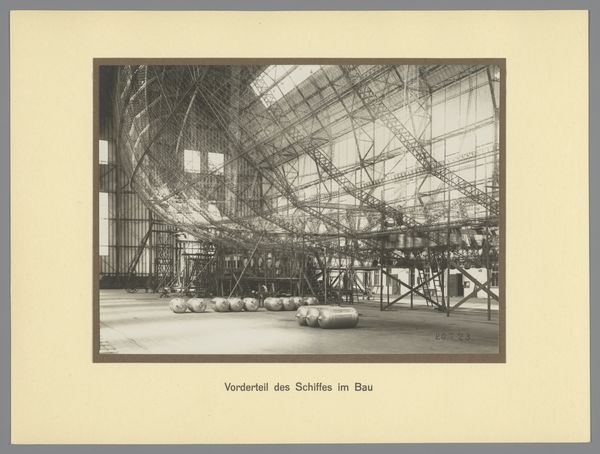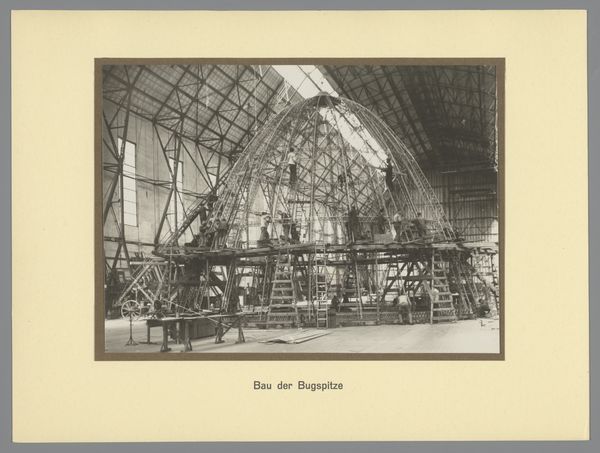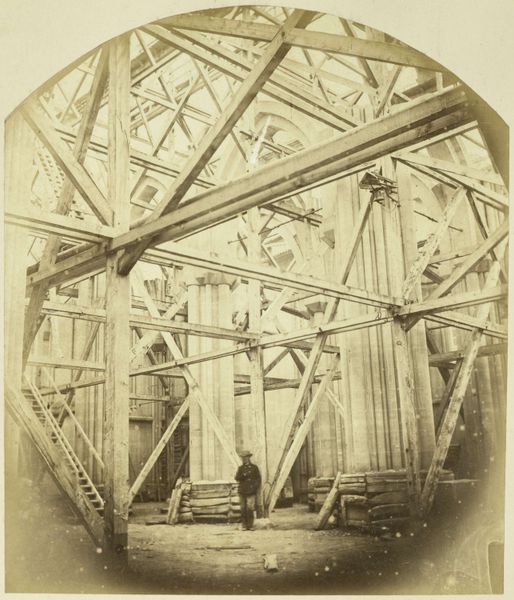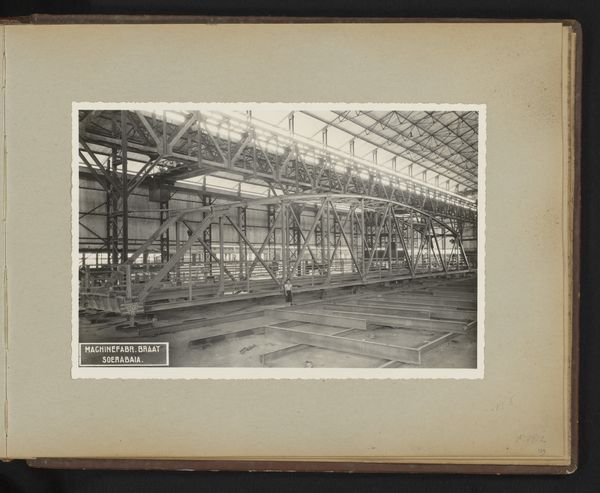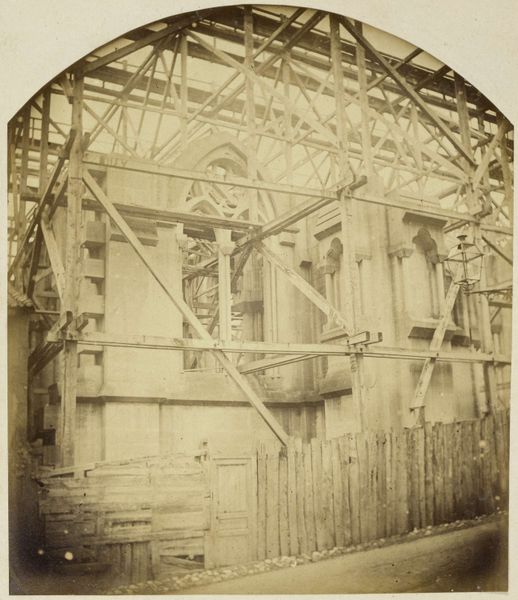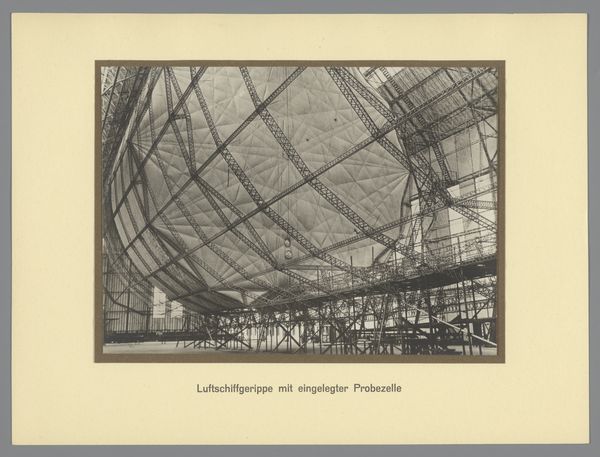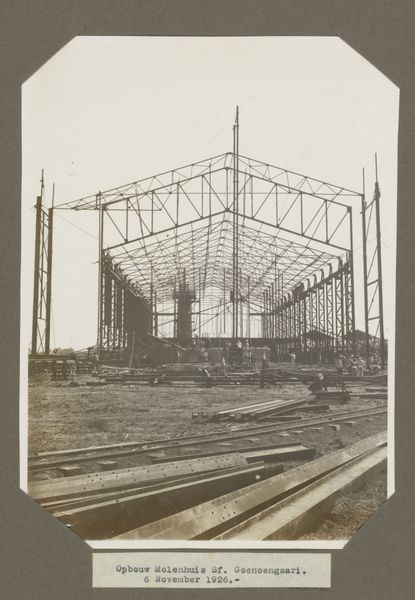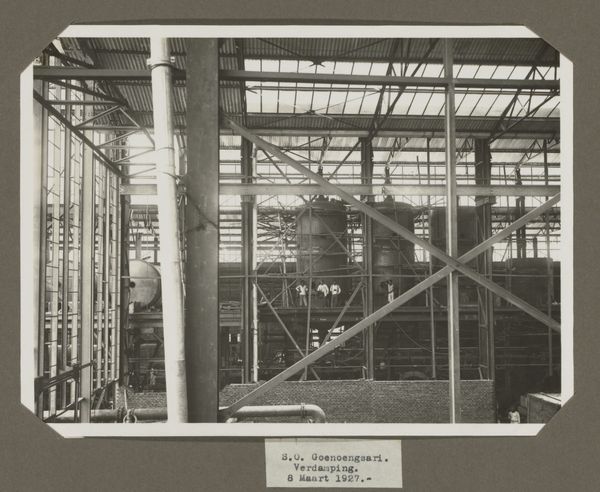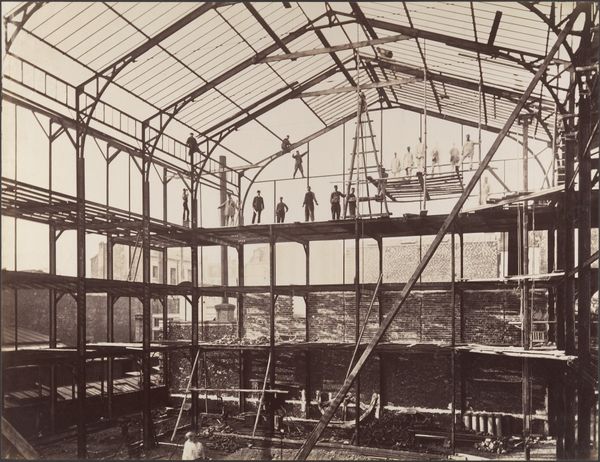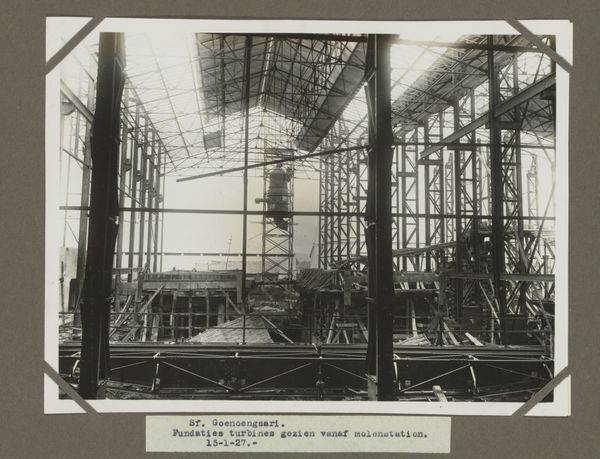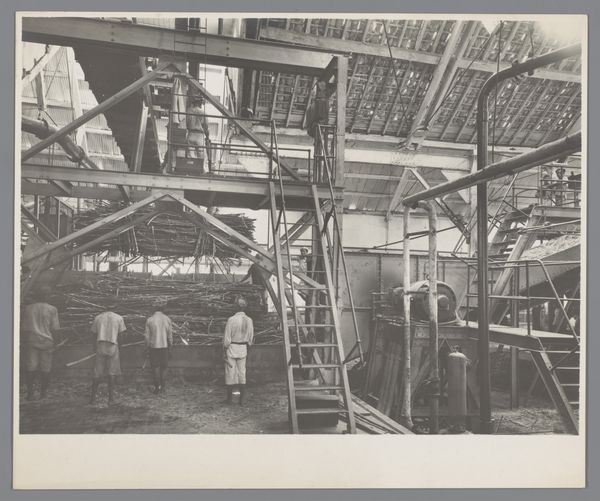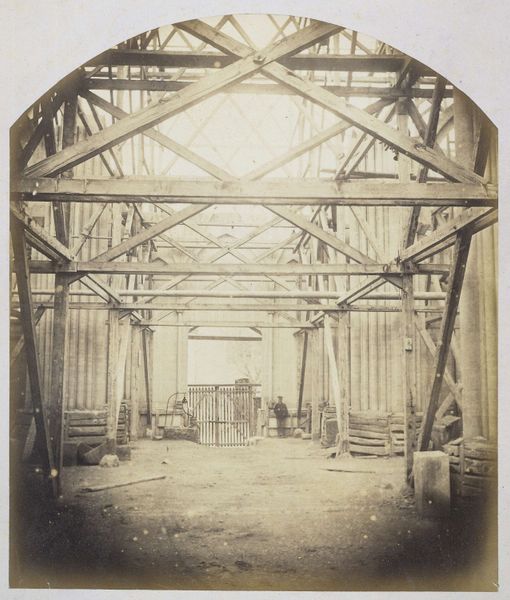![[Construction for the Universal Exhibition of 1855] by Bertsch et D'Arnaud](/_next/image?url=https%3A%2F%2Fd2w8kbdekdi1gv.cloudfront.net%2FeyJidWNrZXQiOiAiYXJ0ZXJhLWltYWdlcy1idWNrZXQiLCAia2V5IjogImFydHdvcmtzL2JlNGNkNjMzLWRjMmItNDBkZi1hZDlkLTZhNTM5MmNmMGZiMi9iZTRjZDYzMy1kYzJiLTQwZGYtYWQ5ZC02YTUzOTJjZjBmYjJfZnVsbC5qcGciLCAiZWRpdHMiOiB7InJlc2l6ZSI6IHsid2lkdGgiOiAxOTIwLCAiaGVpZ2h0IjogMTkyMCwgImZpdCI6ICJpbnNpZGUifX19&w=3840&q=75)
[Construction for the Universal Exhibition of 1855] 1855
0:00
0:00
print, photography, architecture
# print
#
constructivism
#
photography
#
geometric
#
cityscape
#
architecture
Dimensions: Image: 20.7 × 16.4 cm (8 1/8 × 6 7/16 in.) Mount: 31 × 25.1 cm (12 3/16 × 9 7/8 in.)
Copyright: Public Domain
Editor: This is "Construction for the Universal Exhibition of 1855" from the workshop of Bertsch et D'Arnaud, a photograph documenting the building's creation. It’s quite amazing to see the skeletal framework exposed like this, emphasizing geometric and architectural forms. How does this photographic rendering of construction materials resonate with you? Curator: It highlights the often-invisible processes behind grand displays like the Universal Exhibition. Photography here doesn't just record a building; it reveals the labour, the materials, the very nuts and bolts–literally and figuratively–that go into constructing such an event. Consider the social context: this exhibition aimed to showcase industrial progress, but this photo draws attention to the means of production, the raw materiality that progress relies upon. It prompts questions about the human effort involved and the resources consumed. Editor: So, it’s a photograph about more than just architecture. It speaks about labour? Curator: Precisely! It directs our gaze to the working class and the tangible, material base upon which these celebrations of industry are built. Do you think this image was meant to critique or celebrate the spectacle of progress? Editor: I'm unsure; perhaps it straddles both. It celebrates human ingenuity yet tacitly acknowledges the human price of progress and all the preparation necessary to show only the ‘best’ face. I never would have considered that by just looking at it at first glance. Curator: Indeed. And reflecting on the medium, photography itself was rapidly advancing as a means of documentation during this period, allowing for new forms of recording, processing, and, of course, dissemination of information. Considering the processes behind it highlights the interconnectedness of industry, technology, and representation in the 19th century. Editor: Thanks. Now I understand the photograph's layered relationship to both the universal exhibition and our own interpretation of modernity.
Comments
No comments
Be the first to comment and join the conversation on the ultimate creative platform.
